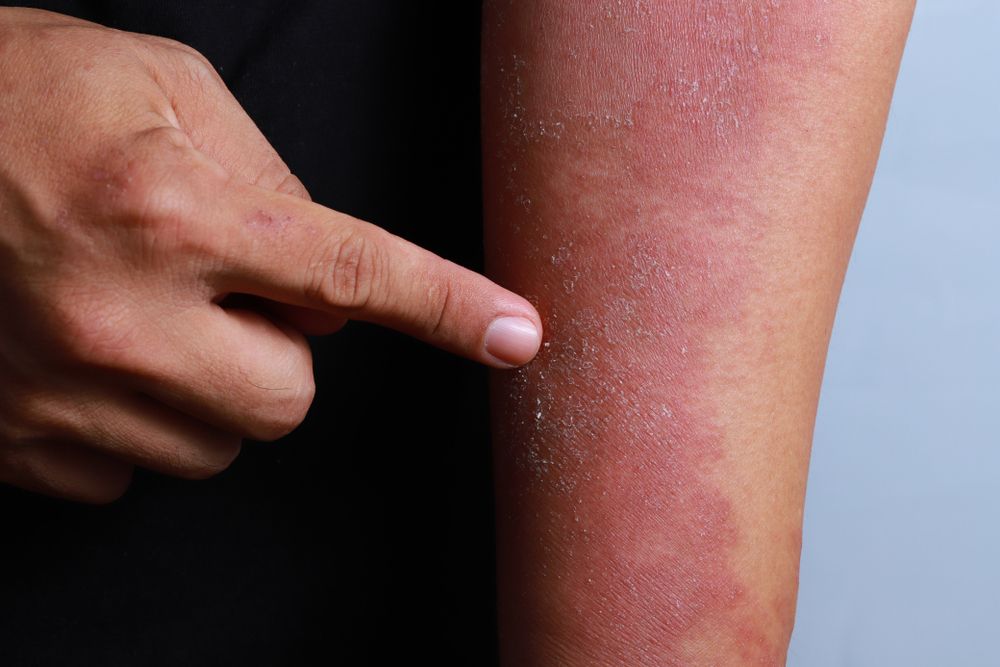- Case-Based Roundtable
- General Dermatology
- Eczema
- Chronic Hand Eczema
- Alopecia
- Aesthetics
- Vitiligo
- COVID-19
- Actinic Keratosis
- Precision Medicine and Biologics
- Rare Disease
- Wound Care
- Rosacea
- Psoriasis
- Psoriatic Arthritis
- Atopic Dermatitis
- Melasma
- NP and PA
- Skin Cancer
- Hidradenitis Suppurativa
- Drug Watch
- Pigmentary Disorders
- Acne
- Pediatric Dermatology
- Practice Management
- Prurigo Nodularis
- Buy-and-Bill
Article
Efficacy of wet wrap vehicles in atopic dermatitis
Author(s):
Wet wraps can improve moderate-to-severe atopic dermatitis, but little research has explored the impact of different topical corticosteroid vehicles on efficacy and patient tolerability. Here's what researchers discovered when they compared creams and ointments as vehicles for corticosteroid wet wraps in atopic dermatitis patients.
“Patients were statistically more likely to prefer the ointment vehicle over the cream for future prescriptions and perceived that the cream was less efficacious,” Lucia Diaz, M.D. (©TYLim/Shutterstock.com)

The choice of vehicle for corticosteroid wet wraps used as a treatment for flare ups of atopic dermatitis in children has little impact on their efficacy, a small study shows.
As a result, researchers recommend that dermatologists base the choice of vehicle on patient preference as it may increase satisfaction with treatment. The patients in their study, published in Pediatric Dermatology,1 had a slight preference for an ointment vehicle despite it being more difficult to apply.
Wet wraps can be an effective means of improving moderate to severe disease, especially flares or recalcitrant disease. However, little research has compared the impact of different topical corticosteroid vehicles on efficacy and patient tolerability or preference, and there is controversy regarding which is the best to use. While some dermatologists advocate creams (oil in water) because they are hydrophilic and therefore may be absorbed better in the aqueous environment of a wet dressing, others prefer ointments (water in oil) because they are often more potent than creams, more occlusive and may be less likely to sting upon application.
This study compared the efficacy of 0.1% triamcinolone acetonide ointment versus cream used with wet wraps in 39 pediatric patients, aged 4-16 years old experiencing symmetric, bilateral atopic dermatitis flares on the upper or lower extremities, recruited from the Dell Children's Medical Center Pediatric and Adolescent Dermatology outpatient clinic in Austin, Texas. A flare was defined as mild to very severe (2-5) on the Investigator's Global Assessment (IGA) and 64% of patients were girls.
Half of patients were given an envelope instructing them to apply a topical steroid cream to their left extremity and half telling them to apply it to their right extremity, and all were told to apply the same topical steroid in an ointment vehicle to the other extremity in both cases using the wet wrap technique once or twice daily for 3 to 5 consecutive days. Researchers were blinded to which vehicle was used on which side until after the follow-up visit.
Wet wraps consisted of any material that was 100% cotton including t-shirts, towels, and pajamas, and patients averaged 1.2 wet wrap sessions per day.
Following removal of dressings, a thin coat of moisturizer was applied to all affected areas. Patients were allowed to use either cream or ointment moisturizers but had to uses the same product on both sides.
At the follow-up appointment, the researchers found no significant difference between efficacy ratings of cream (mean difference = 0.72) and ointment (mean difference = 0.59) when used with wet wraps (P = 0.22).
“Although there was no objective difference in efficacy between the two topical corticosteroid vehicles, this study found an important distinction between patient preferences for topical corticosteroid vehicle, suggesting that individual preference should ultimately drive decisions about topical steroid vehicle,” says researcher Lucia Diaz, M.D., department of pediatrics and medicine (dermatology), University of Texas, Austin, Texas.
“Patients were statistically more likely to prefer the ointment vehicle over the cream for future prescriptions and perceived that the cream was less efficacious,” she adds.
A total of 41% of patients considered the ointment to be the more effective vehicle and 23% considered it to be the cream (23%) (P = 0.03). While patients found the cream (36%) easier to apply than the ointment (23%) (P = 0.03), they still preferred the ointment, with 61% saying the would prefer the ointment vehicle for future prescriptions (P < 0.01).
“Some patients reported ‘stinging’ associated with the cream, which possibly influenced perception and preference,” Diaz says. No other adverse effects were reported or observed.
Diaz suggests that the application of the wet dressings over the treated area overcame the complaint of greasiness commonly made by patients using ointments.
Patients reported an overall improvement in Children's Dermatology Quality of Life Index (CDLQI) scores following use of wet wraps (P < 0.01) and were eager to use wet wrap therapy in the future.
References:
1. Cadmus SD, Sebastian KR, Warren D, et al. Efficacy and patient opinion of wet-wrap dressings using 0.1% triamcinolone acetonide ointment vs cream in the treatment of pediatric atopic dermatitis: A randomized split-body control study. Pediatr Dermatol. 2019;36(4):437-441.






